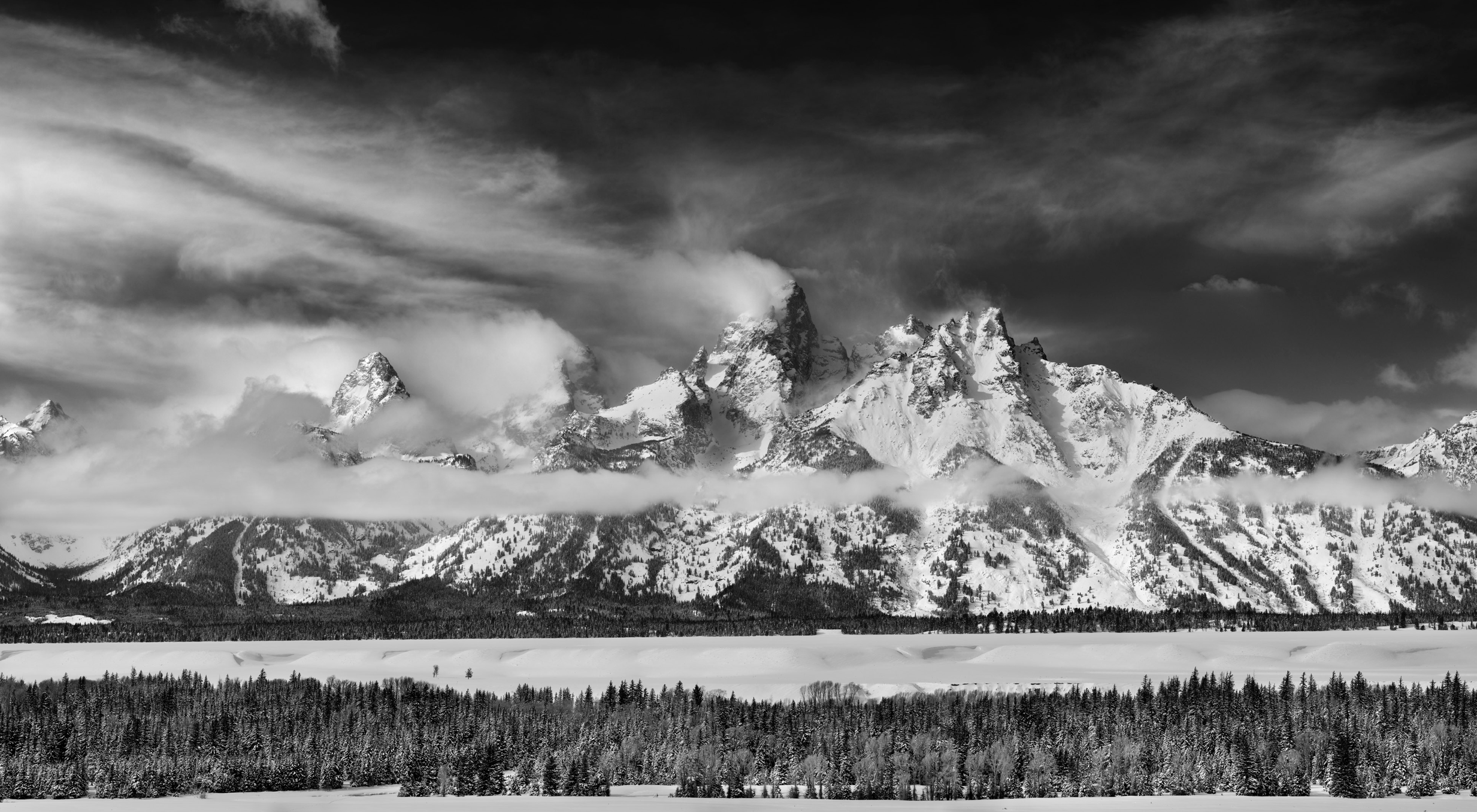Below you will find a sampling of images that are currently being shown at the gallery. Please note this is only a portion of David's body of work.
Silver Gelatin
Adams, Weston, Karsh, Ruth Bernhard to name just a few, this is one of the better known of the processes we use, and rightly so. In my humble opinion there is not a black and white digital process that even comes close to the look of this traditional, hands on printing method. Rich in history, photographers and collectors have been drawn to Silver Gelatin prints for decades. To see a silver gelatin properly lit on a wall is a gift in itself, its as if the Universe is speaking to the viewer in its own language.
color
David Brookover’s return to color photography marks an exciting new direction for The Brookover Gallery. Known for his striking black-and-white prints, Brookover now brings fresh energy to his work with vibrant color landscapes of the Tetons. This new series offers a dynamic and immersive perspective while staying true to the quiet elegance that defines his style.
Platinum Palladium
Platinum prints are the most durable of all photographic processes. The platinum group commonly referred to as noble metals are the most stable of all printing methods. It is estimated that a platinum image, properly made, can last over a thousand years.
Although very difficult to print, the platinum palladium offers what is often described as having the greatest tonal range when compared to all other printing methods. We are honored in having one of the largest displays of platinum palladium prints in the U.S.
Photogravure
Arguably the most beautiful, challenging, and labor-intensive of the traditional photographic processes, photogravure printmaking is among the earliest, dating back to the mid-1800s. Best noted in the work of Edward S. Curtis through his epic anthropological study "The North American Indian", which he editioned from 1907-1930, the photogravure quickly gave way to more affordable silver-gelatin printing popularized by Eastman Kodak's Brownie camera. Prior to Kodak, artists, the church, and businesses primarily turned to printmakers who used presses to render quality images for distribution. Photogravure has come out of the long tradition of intaglio printmaking whereby artisan printmakers, working in conjunction with artists, would create an image by carving, engraving, or etching (with resists and acid) into a metal substrate, wiping oil-based ink into the grooves or pits created, and then running it through a printing press onto dampened paper.
carbon piezo
Utilizing the distinct quality of carbon pigments and the precision of the piezoelectric printing technology, a Carbon Piezo print provides some of the most high-quality results in the black-and-white photography industry.
Despite using only 7 shades of carbon ink, the carbon piezo process can achieve a wide range of tones, including sharp shadows, well-defined mid-tones, and clear highlights.
With this ground-breaking combination of modern printing and archival pigments, the Carbon Piezo method has become one of the most well-known printing processes when it comes to consistently achieving fine details, smooth tonal transitions, and overall better image clarity.




